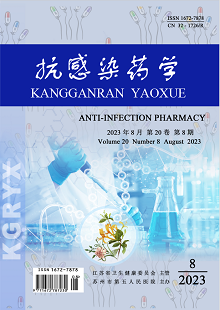MA Min-ya, PING Hui, CHEN Yi, JIN Yu
Objective: To analyze the clinical use of sacubitril valsartan sodium in patients with chronic heart failure (CHF) in the hospital, and provide reference for the safe and rational use of sacubitril valsartan sodium in clinical practice. Methods: By using the hospital information system, 190 CHF patients treated with sacubitril valsartan sodium in Cardiovascular Medicine Department of Changshu No. 2 People's Hospital from January to December 2020 were selected as the research subjects. The information such as left ventricular ejection fraction (LVEF), past medication history, and information on usage and dosage, treatment course, efficacy, and adverse drug reactions of sacubitril valsartan sodium was collected to analyze the clinical use of Sacubitril Valsartan Sodium in patients. Results: 190 CHF patients all met the indications for use of Sacubitril Valsartan Sodium. Among them, 183 patients had LVEF less than or equal to 40% before treatment, while the remaining 7 patients had LVEF more than 40% before treatment but had CHF symptoms that needed to be controlled; the initial regimen of sacubitril valsartan sodium was mainly "25mg, q12h" (88 cases, 46.32%) and "50mg, q12h" (97 cases, 51.05%), with only 5 cases of "100mg, q12h", while the maintenance treatment regimen was mainly "50mg, q12h" (83 cases, 43.68%) and "25mg, q12h" (62 cases, 32.63%), with a total of 123 patients (64.74%) not adjusting the treatment regimen; among 190 patients, 101 (53.16%) had previously been taking angiotensin converting enzyme inhibitors or vascular receptor blockers, but 8 patients who used angiotensin converting enzyme inhibitors had a drug conversion interval of less than 36 hours when changing the treatment regimen; in terms of medication course, 68 cases (35.79%) had a treatment course greater than 1 year, and 17 cases (8.95%) had a treatment course greater than 6 months to 1 year; during the treatment process, 22 patients (11.58%) achieved the target dose treatment target, with 2 patients receiving a maintenance regimen of "200mg, q12h" and the remaining 20 patients receiving the highest tolerated dose maintenance; among 85 patients with a treatment course more than 6 months, there were 49 cases that sacubitril valsartan sodium was significantly effective, 26 cases that the medicine was effective, and 10 cases that the medicine was basically ineffective; 28 (14.74%) out of 190 patients experienced adverse drug reactions during the medication process, including 22 cases of hypotension, 4 cases of renal function damage, and 2 cases of hyperkalemia. However, all patients improved after treatment. Conclusion: The hospital generally has reasonable clinical management of indications and medication conversion for sacubitril valsartan sodiume, but there is still a lack of compliance with target doses, which is an important indicator affecting the medication efficacy of patients. In clinical practice, management in the whole treatment course of patients should be strengthened to ensure the medication safety and effectiveness of patients.
